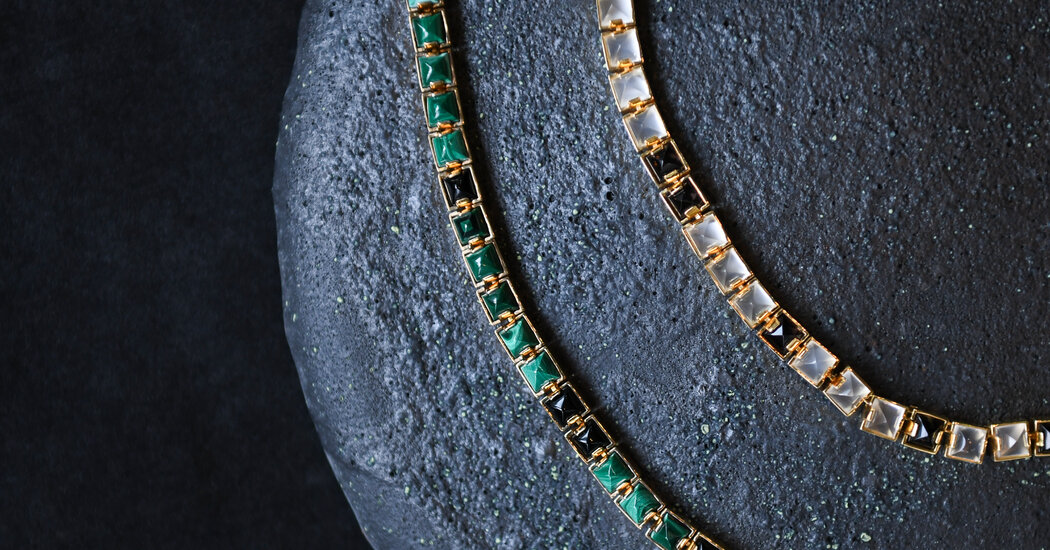Then, just hours before another show, when Mr. Yamamoto requested a “wearable,” Ms. Harui said she grabbed a handful of the conical forms she uses as ring displays and strung them together into an arm piece. Her boss approved. “He likes it when creative people do their own thing,” she said.
There’s a similarly spur-of-the-moment feel to the collection’s artfully tangled necklaces, like one in a jumble of leather and brass, offered on the Yohji Yamamoto website. And amid the blackened silver chains and wedges of smoky quartz or garnets set on rings and ear cuffs are discreet variations on Ms. Harui’s signature designs for her own brand.
For example, the jagged Noise Ring, which Ms. Harui said had also been a perennial best seller for her brand, was inspired by her other great love, music (she is an occasional D.J. and regularly attends deep-house and techno music festivals). And the off-center Rugged Tablet Ring, set with a large obsidian cabochon, reflected the empowered, contrarian stance she took in 2018 when — eight years after abandoning a career at Y-3, Mr. Yamamoto’s collaboration with Adidas, for marriage and motherhood — the newly divorced designer introduced a small first collection of Riefe silver jewelry, called Liberation.
“I always knew I wanted to do something creative with jewelry, but I don’t like cute, romantic things. Kawaii is what I never, ever wanted to do,” she said, referring to the Japanese word for cute or endearing. “I wanted to express beauty through strength, so that independent women like me can buy jewelry the way they would buy a nice coat that they love to wear.”
Minimalist, graphic and discreetly edgy, Riefe jewelry is more feminine, classic leaning and affordable than its runway counterparts. Prices start at less than $200 for a silver band beaded with tiny skulls and rise to about $4,600 for a silver choker with bezel-set black spinel and pale gray howlite, although the made-to-order jewels she calls K10, K18, or K24, depending on the purity of the gold, can cost $8,000 or more. The line is made entirely in Japan.
The aesthetic that has led Ms. Harui to set gems like pink sapphires and malachite pointy side up mirrors her own unconventional background, she said, starting with a passion for skateboarding that took her off the college track and to Los Angeles at 17. There, an introduction to Guillaume Pajolec, then the designer of Chrome Hearts, set her on the path to jewelry design.







